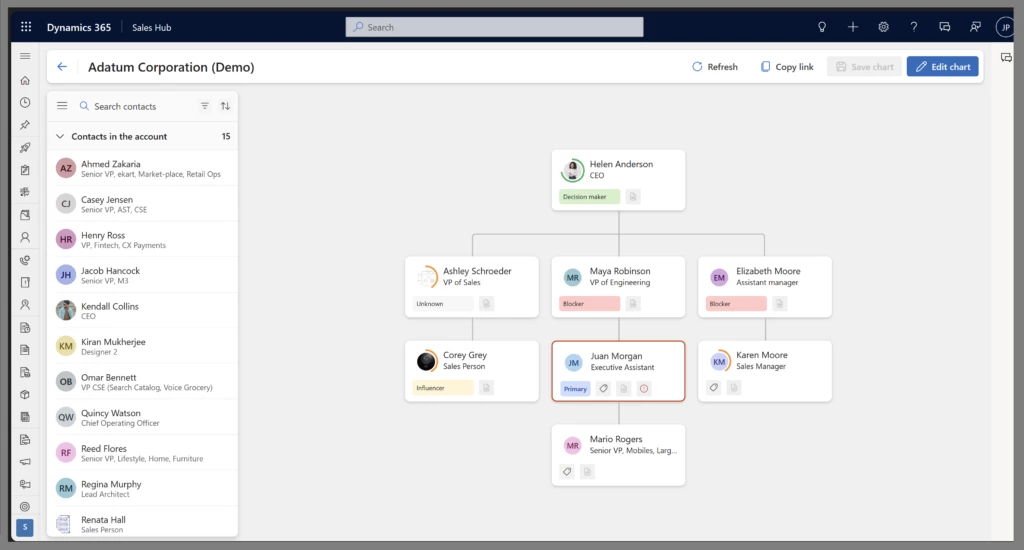
Boost your sales business with smart organization charts
This article is contributed. See the original author and article here.
Organization charts enable sellers to better understand their customers’ organizational structures and identify key decision-makers. This information helps sellers develop and execute targeted sales strategies, improve their sales effectiveness, and build stronger relationships with their customers. Additionally, having an org chart in a CRM system helps improve collaboration among sales teams and improves overall communication and coordination with the customer’s organization.
With our new organization charts, you can build your entire org chart with ease and precision!
Creating organization charts made easy
The new feature in Dynamics 365 Sales makes building an organizational chart easier and more efficient, as users can create entire org charts with simple drag-and-drop actions. The list of all contacts of a given account is automatically gathered for you and displayed in the side pane. Through a simple drag-and-drop action, the entire org chart can be built in just a few minutes!
With the new organization chart, users can leverage tags to indicate key players and decision-makers in the org. This helps sellers quickly identify the right people to engage with during the sales process, reducing the time it takes to close deals and improving the overall customer experience. Users can create assistant cards to include executive assistants in the chart as well.

Monitor Contact Health
The new feature allows users to monitor the health and risks of customer relationships using relationship health embedded in organization charts. This capability helps sellers to identify potential risks to customer relationships, such as inactive accounts or unresolved issues, and take proactive measures to address them. It improves the overall health of customer relationships and reduces the risk of losing valuable customers. You can learn more about relationship intelligence by reading the Overview of Relationship intelligence | Microsoft Learn
Users can capture notes directly from organization charts on-the-go, enabling them to capture critical information about customers quickly. This feature helps sellers remember important details about their customers and allows them to keep track of their customer interactions. Users can access the org chart directly from the Contacts form, making it easier to navigate and manage customer information.
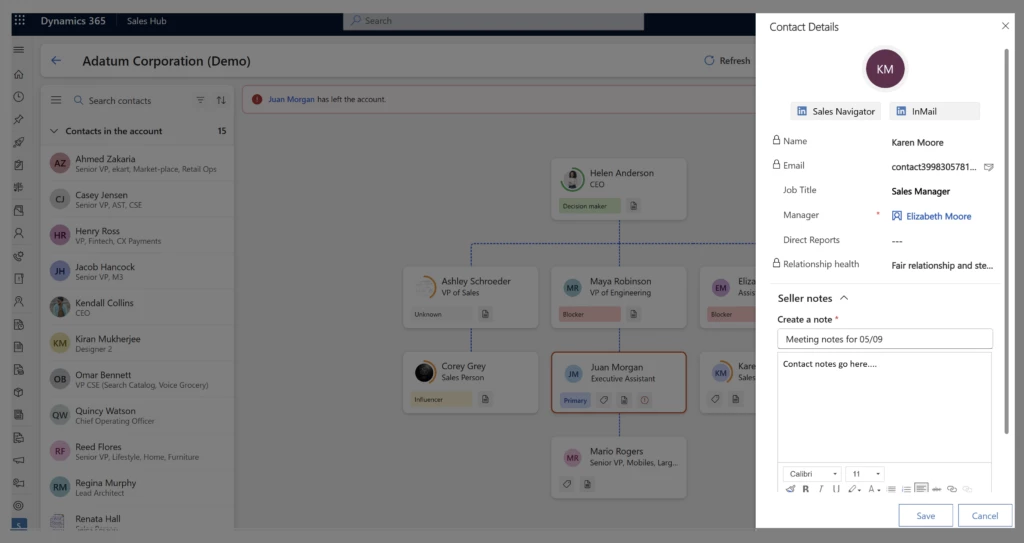
Do more with LinkedIn
LinkedIn Sales Navigator is a powerful tool that enables sales professionals to build and maintain relationships with their clients and contacts. With a Microsoft Relationship Sales license, users can receive notifications when one of their contacts leaves an account. This feature is particularly useful for sales teams, as they rely on accurate and up-to-date information to achieve their goals. Additionally, with a Sales Navigator license, users can continue to send InMail and access the LinkedIn profile of their contacts. Therefore, organization charts offer even more, when you combine them with LinkedIn Sales Navigator as users get notifications that help maintain data accuracy.
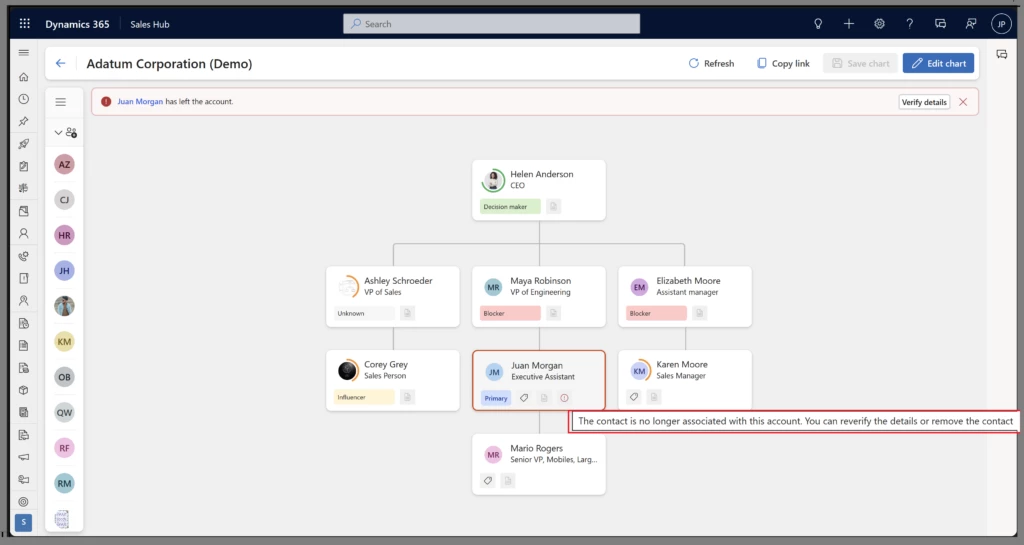
To summarize, the smart organization charts offer the following capabilities:
- Build the entire org chart via simple drag-and-drop action.
- Leverage tags to indicate key players and decision-makers.
- Create Assistant cards to include executive assistants in the organization chart.
- Capture notes directly from org charts on-the-go.
- Access your organization chart directly from the Contacts form as well.
- Monitor the health and risks of the customer relationships using relationship health embedded in organization charts.
- Get notified when contacts leave the organization with LinkedIn Sales Navigator License.
Next Steps
Increasing your sales team’s collaboration could be as simple as having an organization chart where you can visualize all your stakeholders and Dynamics 365 Sales makes it easy.
To get started with the new org charts:
- For end users: Manage org charts | Microsoft Learn & View and understand the org charts | Microsoft Learn
- For admin users: Enable org chart | Microsoft Learn
Not a Dynamics 365 Sales customer yet? Take a guided tour and sign up for a free trial at Dynamics 365 Sales overview.
The post Boost your sales business with smart organization charts appeared first on Microsoft Dynamics 365 Blog.
Brought to you by Dr. Ware, Microsoft Office 365 Silver Partner, Charleston SC.

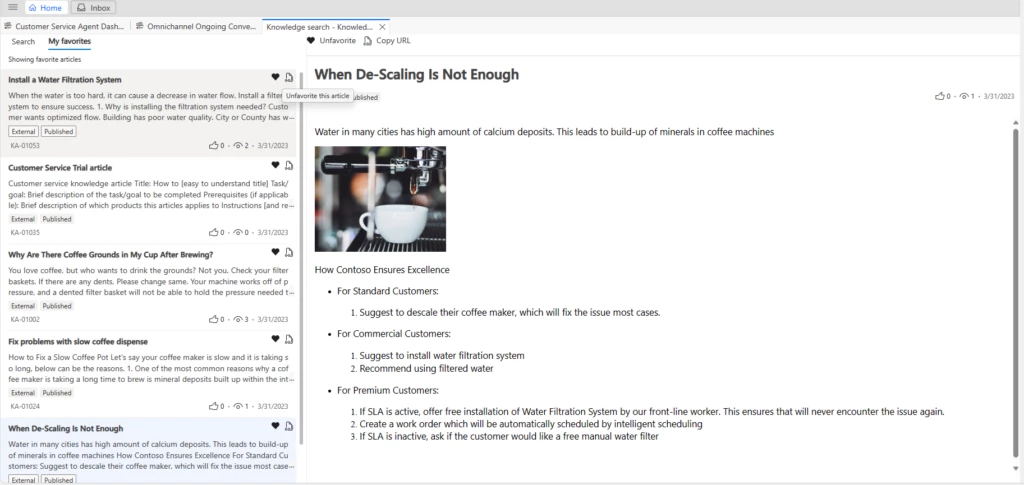
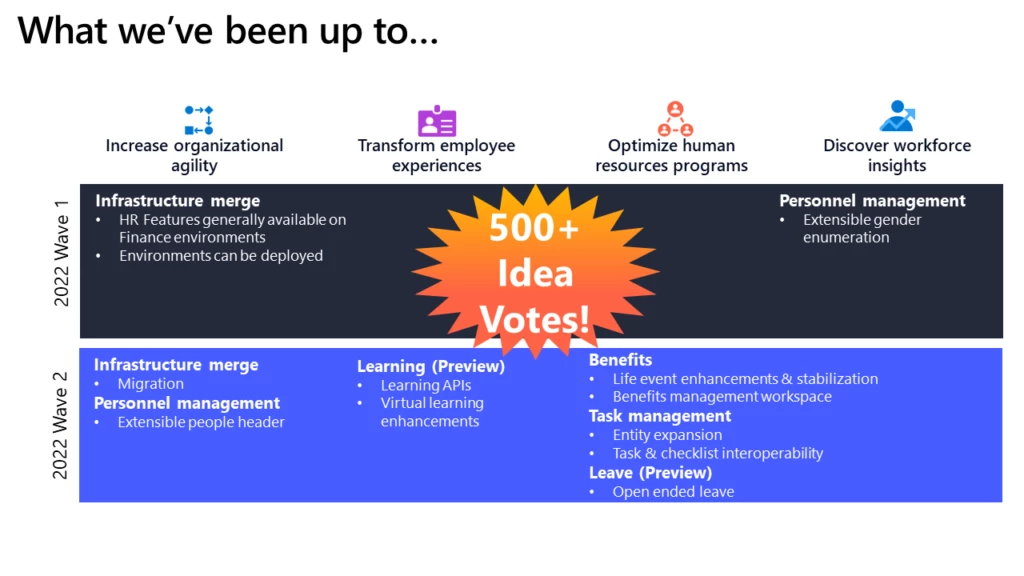
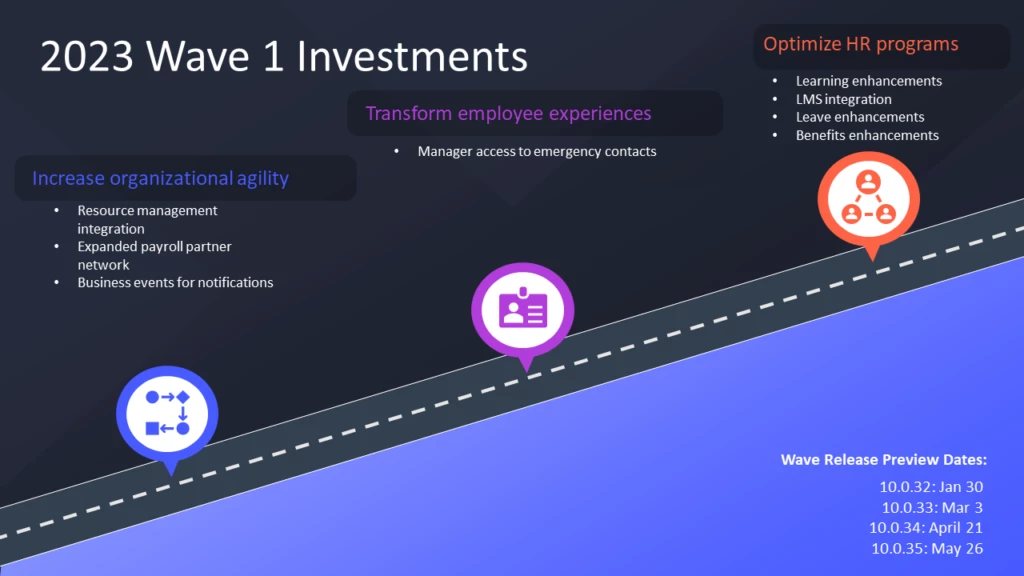
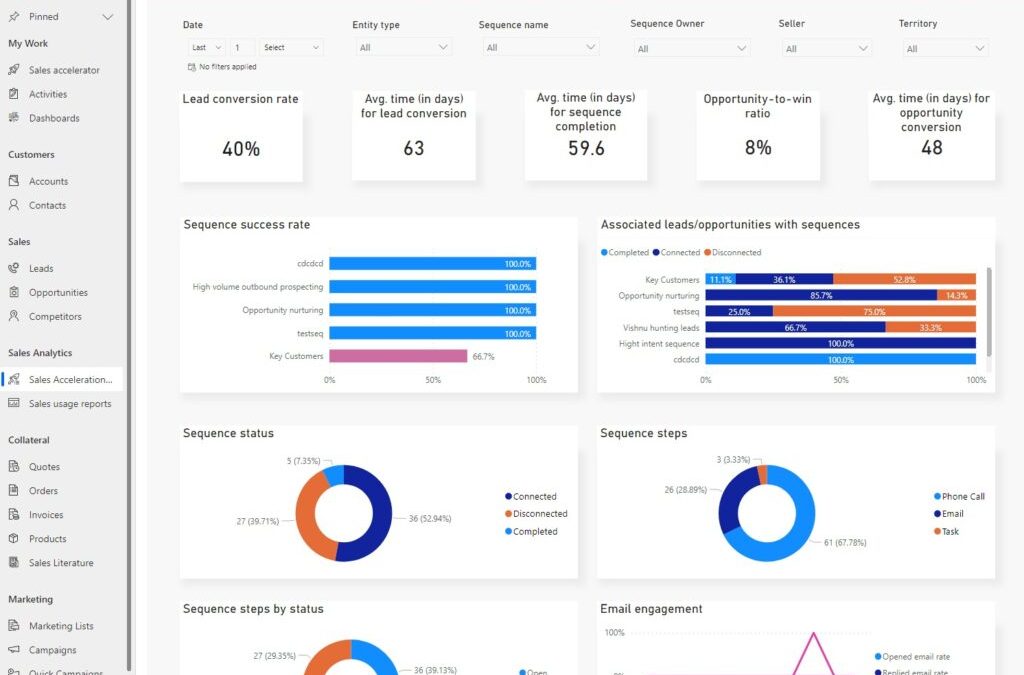
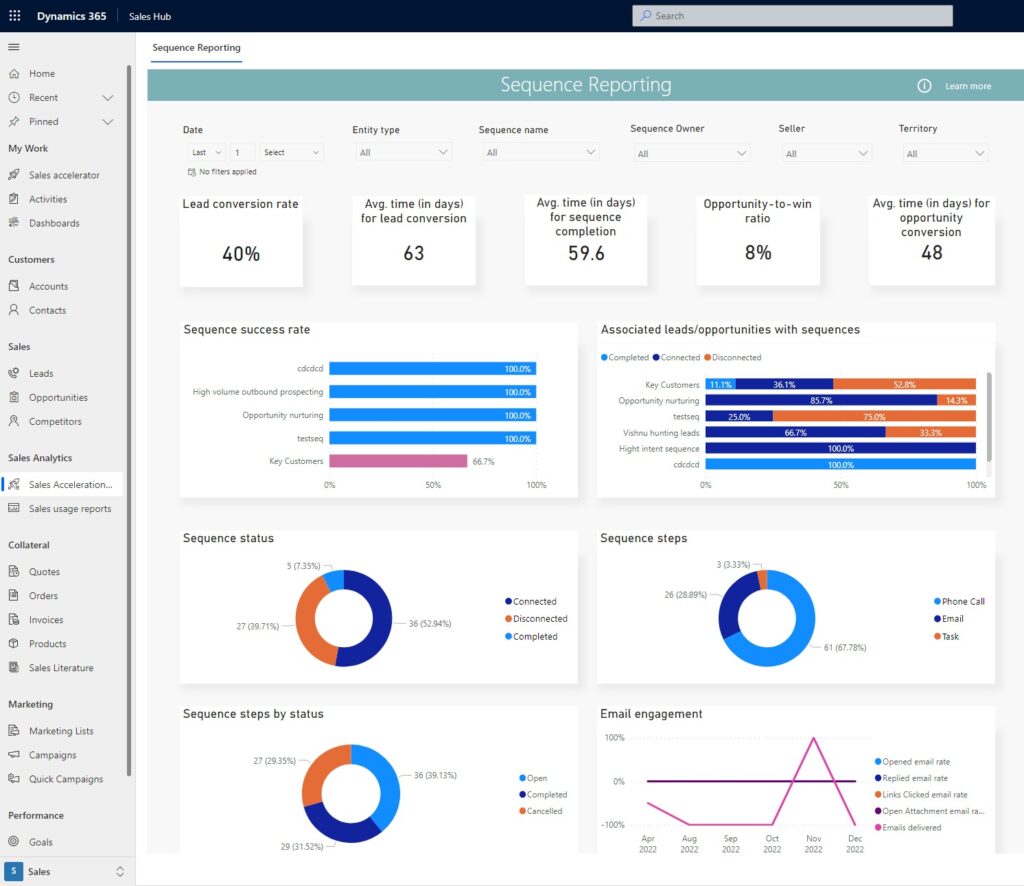
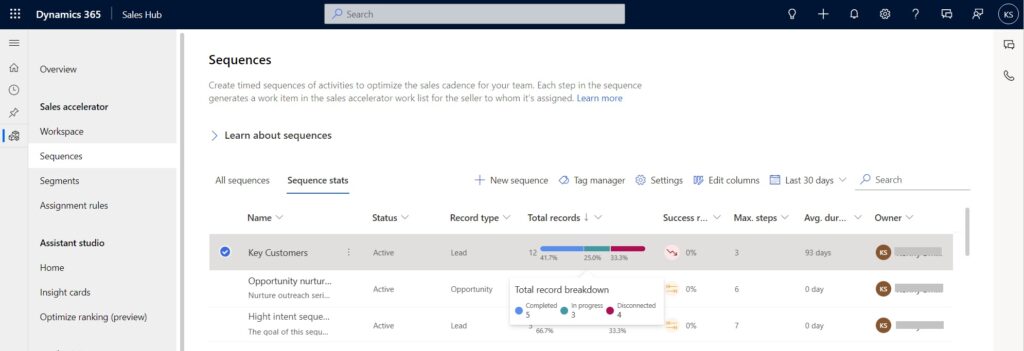
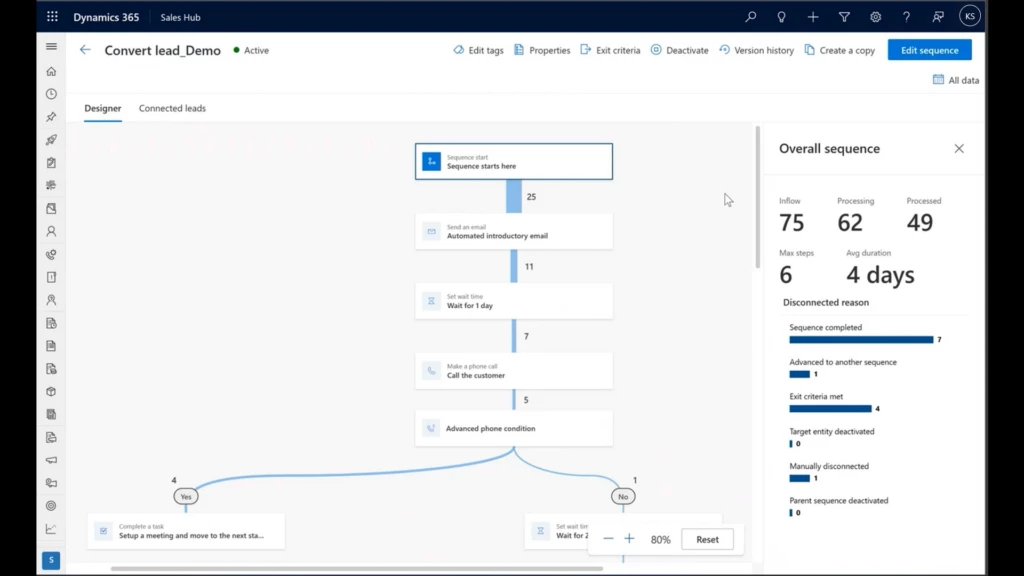
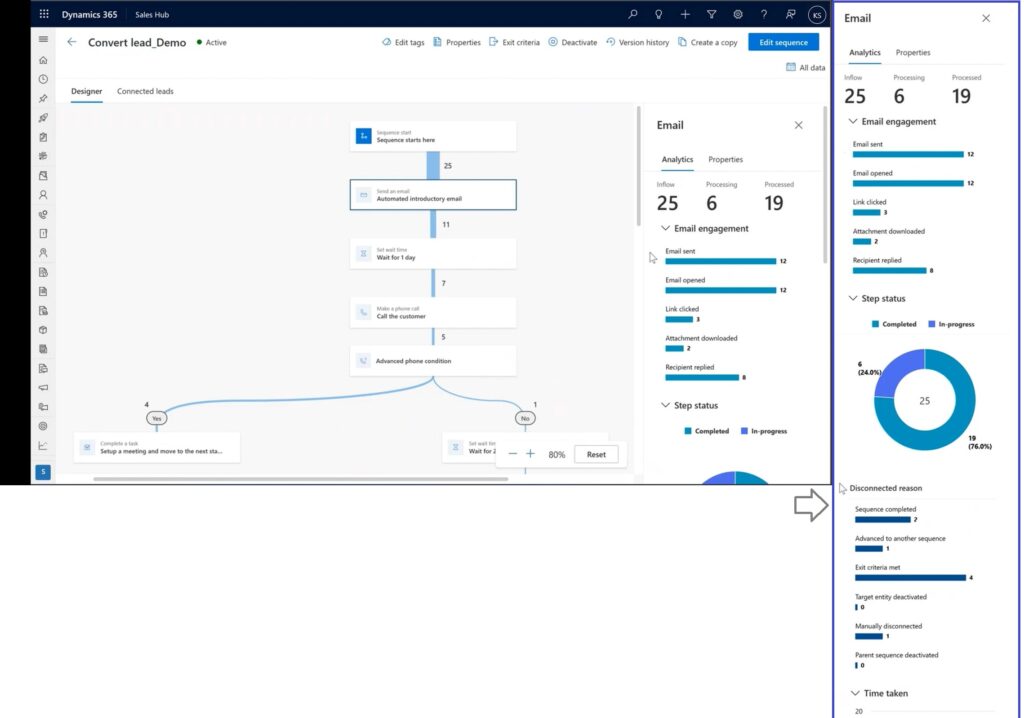



Recent Comments